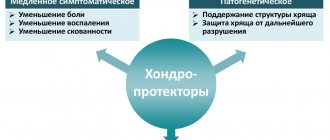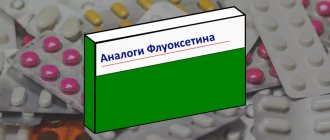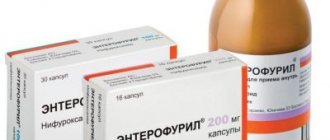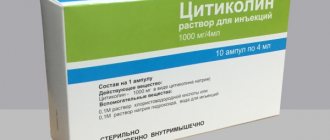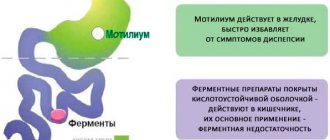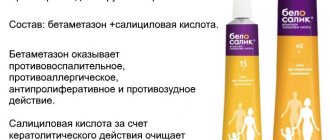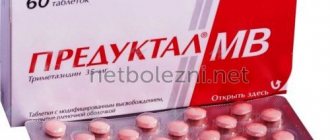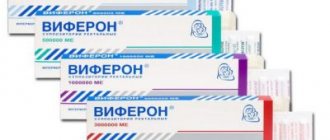Prohibited during pregnancy
Prohibited during breastfeeding
Has restrictions for children
Has restrictions for older people
Has limitations for liver problems
Has limitations for kidney problems
The market for pharmacological agents that can cope with rheumatic pain syndrome is expanding quite often. Thanks to this, it is possible to choose a drug that will suit the patient according to three parameters at once - effectiveness, safety and price.
One of these medicines is the Swiss drug Arcoxia. The mechanism of action of the drug is based on the selective inhibition of cyclooxygenase-2, which is the most important link in the mechanism of prostaglandin formation.
Advantages of the drug Arcoxia
The latter, in turn, are the main pathological link in inflammatory processes. The peculiarity of Arcoxia is that, having pyrolytic and anti-inflammatory properties, the drug does not affect the condition of the blood system and the mucous membrane of the gastrointestinal tract.
Indications for the use of the drug are diseases of an inflammatory rheumatoid nature, as well as conditions accompanied by pain.
Arcoxia is not advisable to use in case of hypersensitivity to the components of the drug (drug), peptic ulcer of the stomach and duodenum, as well as symptoms of drug-induced asthma and allergic reactions in combination with other non-steroidal anti-inflammatory drugs. This medication is not prescribed for children under 18 years of age, pregnant and lactating women.
Despite this, the high cost of Arcoxia does not allow the drug to be used for systemic treatment and forces the doctor and patient to look for cheaper analogues.
pharmachologic effect
Manufacturer: Netherlands
Release form: Tablets of 30, 60, 90, 120 mg
Active ingredient: etoricoxib
Analogues: Celebrex, Kostarox, Meloxicam
In addition to the active ingredient, Arcoxia contains auxiliary elements: calcium hydrogen phosphate, fine crystalline cellulose, croscarmellose sodium, magnesium stearate. The drug effectively relieves the inflammatory process of the osteoarticular system and relieves pain.
Arcoxia treats or only relieves pain
For what pathologies is the use of the medication indicated and does Arcoxia really cure? In therapeutic practice, effective relief of the inflammatory process by taking the drug for a short period of time is noted.
The clinical manifestations of the disease subside, the intensity of pain decreases significantly, that is, Arcoxia has a therapeutic effect on pathologically altered joints.
Comparison of safety of Arcoxia and Costarox
The safety of a drug includes many factors.
At the same time, in Arcoxia it is quite similar to Kostarox. It is important where the drug is metabolized: drugs are excreted from the body either unchanged or in the form of products of their biochemical transformations. Metabolism occurs spontaneously, but most often involves major organs such as the liver, kidneys, lungs, skin, brain and others. When assessing metabolism in Arcoxia, as well as in Kostarox, we look at which organ is the metabolizing organ and how critical the effect on it is.
The risk-benefit ratio is when the prescription of a drug is undesirable, but justified under certain conditions and circumstances, with the obligatory observance of caution in use. At the same time, Arcoxia does not have any risks when used, just like Kostarox.
Also, when calculating safety, it is taken into account whether only allergic reactions occur or possible dysfunction of the main organs. In other matters, as well as the reversibility of the consequences of using Arcoxia and Kostarox.
Arcoxia - instructions for use
According to the instructions for use, Arcoxia is prescribed in various dosages, from 30 to 120 mg, depending on the type of disease and the intensity of the inflammatory process:
- for osteoarthritis - 30 or 60 mg;
- for rheumatoid arthritis and spondylitis – 60 or 90 mg;
- for arthritis of gouty etiology – 120 mg;
- for acute pain after dental procedures - 90 mg for no more than 3 days.
The use of a daily dosage of 120 mg of Arcoxia or an analogue should not exceed 8 days. The drug is taken in a minimal amount only once, that is, the daily dose of the medication should not exceed the listed dosages.
Arcoxia how to take before or after meals
The non-steroidal anti-inflammatory drug Arcoxia is used orally in the morning or afternoon, regardless of meals. The tablets are taken with a small amount of water.
Prices for the drug and its analogues
Below are the average prices in the Russian Federation for Arcoxia analogues.
| Name | Price in rubles |
Arcoxia
| 770 720 510 650 |
| Celebrex, capsules No. 10 | 480 |
| Diclofenac, tablets No. 20 | 60 |
| Nimesulide, tablets No. 30 | 90 |
| Kostarox, tablets No. 28 | 770 |
| Dilaxa, capsules No. 10 | 245 |
| Artrofoon, tablets No. 100 | 280 |
| Celecoxib, capsules No. 20 | 680 |
| Roucoxib-Routek, capsules No. 10 | 355 |
| Dynastat, bottle 40 mg, No. 5 | 2450 |
| Artrin, 5% ointment | 180 |
| Chondroxide, 5% gel | 350 |
Arcoxia's analogs
The pharmaceutical industry produces a number of analogues of the drug Arcoxia with similar properties and therapeutic effects, which can be presented as:
- generics;
- synonyms;
- combination drugs.
The presence of a large number of Arcoxia substitutes will allow the doctor to select an analogue with maximum effect in the treatment of diseases of the osteoarticular system for both young and elderly patients.
Table of analogues of Arcoxia tablets with prices and country of origin
| Analogue | Price in rubles | Manufacturer country |
| Ibuprofen | 30-95 | Russia |
| Indomethacin | 85-380 | Russia |
| Naproxen | 185-250 | Russia, Poland |
| Amelotex | 300-360 | Russia |
| Dexalgin | 210-270 | Germany |
| Arthrozan | 220-250 | Russia |
| Nimesulide | 55-200 | Russia |
Arcoxia analogues and substitutes can not only relieve inflammation and relieve pain, but also have an additional effect in the treatment of joint diseases. In addition, you can buy Arcoxia analogues cheaper, but with identical treatment results.
Ibuprofen
Manufacturer: Russia
Release form: tablets, gel for external use
Active ingredient: ibuprofen
Ibuprofen in the form of a gel for external use helps relieve inflammation and swelling, reduces stiffness and increases range of motion in the joint.
To enhance the effect, disease therapy is supplemented with internal use of Ibuprofen tablets 200 mg 3-4 times a day. The drug can be prescribed to young children as an antipyretic.
Indomethacin
Manufacturer: Russia
Release form: ointment for external use, tablets
Active ingredient: indomethacin
Indomethacin, when applied topically to pathologically changed joints, promotes:
- relief of pain syndrome;
- reduction of hyperemia, swelling;
- increasing the range of motion in the joints.
The drug actively acts not only on the cartilage tissue of the joints, but also on the synovial fluid. For internal use, it is prescribed 25 mg 2-3 times a day.
The course of treatment with this analogue of Arcoxia lasts up to 4 weeks. It is recommended with caution for older patients, as well as for diseases of the liver, kidneys, and chronic heart failure.
Naproxen
Manufacturer: Russia, Poland
Release form: tablets, suppositories, gel for external use
Active ingredient: naproxen
Composition: tablets 250, 500 mg
The drug has anti-inflammatory and analgesic effects, relieves febrile conditions associated with infectious processes. Naproxen can be used in children aged 1 to 5 years as an antipyretic in tablets of 2.5-5 mg/kg. For adult patients, the analogue is prescribed 250 mg 2 times a day in the morning and evening.
To enhance the effect of therapy, it is possible to supplement the internal use of the medicine and its external use on inflamed joints.
Amelotex
Manufacturer: Russia
Release form: tablets, solution for intramuscular administration
Active ingredient: meloxicam
Composition: ampoules 15 mg, tablets 7.5 mg
The Arcoxia analogue Amelotex actively penetrates the histohematic barrier, that is, through the “filter” between the blood and tissue fluid, reaching 50% concentration in plasma.
Amelotex is taken once a day with meals and provokes regression:
- pain syndrome;
- inflammation;
- temperature reaction.
Depending on the type of disease, the daily dosage of the analogue may vary upward from the minimum dose.
Dexalgin
Manufacturer: Germany
Release form: tablets, ampoules for parenteral administration
Active ingredient: dexketoprofen
Composition: tablets 0.25 mg, ampoules 1.0 and 2.0 ml
Dexalgin has a pronounced analgesic effect, which is achieved within half an hour after taking the analogue and lasts up to 4–8 hours. The use of the drug is recommended with meals. In case of acute pain, its administration must be postponed before meals, since the combination of medicine and food slows down the absorption of the Arcoxia analogue. The medication actively relieves:
- inflammation in the joints;
- hyperemia in the area of the pathological process;
- increases local metabolism.
Parenteral administration of the Arcoxia analogue to relieve acute joint pain, possibly for no more than 2 days, 50 mg at an interval of 8–12 hours. The drug is prescribed with caution to older patients over 65 years of age. An absolute contraindication is its use for children.
Arthrozan
Manufacturer: Russia
Release form: tablets, ampoules for intramuscular administration
Active ingredient: meloxicam
Composition: tablets of 0, 15 mg and 7.5 mg
The analogue of Arcoxia Artrosan is prescribed as anti-inflammatory therapy for diseases of a muscular-articular nature accompanied by degenerative processes.
The drug in a dosage of 7.5–15 mg should be taken with meals, regardless of the type of disease and the degree of exacerbation of the process. For patients on hemodialysis with chronic renal failure, the dosage of the Arcoxia analogue should not exceed 7.5 mg.
Nimesulide
Manufacturer: Russia
Release form: tablets
Active ingredient: nimesulide
Composition: 1 tablet 100 mg
Nimesulide is an analogue of Arcoxia, which has minimal contraindications and can be used in childhood. The maximum concentration in blood plasma is achieved within 1–2 hours after taking the analogue. The drug effectively reduces:
- inflammatory process in the muscular-articular system;
- local fever;
- aggregate action of blood (formation of blood clots).
It is prescribed orally at 100–200 mg 2–3 times a day, depending on the type of joint pathology and concomitant diseases of the internal organs.
Arcoxia substitutes have the same pronounced analgesic and anti-inflammatory effect, but the price of analogues is much lower. This allows doctors to individually select a drug for the patient to treat joint pathology and get the maximum effect.
Other analogues of Arcoxia
Additional list of Arcoxia analogues, which includes drugs that provide analgesic, anti-inflammatory effects and are part of the same pharmacological group:
- Nise - tablets of the Arcoxia analogue, which contains the active substance nimesulide, have extended indications. They can be used not only for degenerative inflammatory processes in the joints, but also for bursitis, inflammation of ligaments and tendons.
- Celecoxib is a drug effective for rheumatoid arthritis, accompanied by severe pain. The dosage of the analogue is 200 mg once a day. According to indications, it can be increased to 2 times a day. The drug is prescribed with caution to patients with chronic heart failure.
- Dilaxa - the active substance of the Arcoxia analogue is celecoxib, which gives a positive therapeutic result in the treatment of arthritis of various etiologies. It relieves inflammation and pain well. Taken in capsules of 200 mg 1-2 times a day.
- Etoricoxib, an analogue of Arcoxia, is characterized by high bioavailability (penetration into the site of inflammation), amounting to almost 100% after oral administration. The medication is effective for arthrosis, arthritis, spondylitis, accompanied by excruciating pain. The daily dosage of use is 60 mg of the Arcoxia analogue 1–2 times a day.
- Ketanov - is characterized by rapid relief of pain due to the presence of osteoarticular pathology. It is possible to take the analogue at a dose of 10 mg every 4-6 hours, and for special indications - 20 mg 3-4 times a day. The Arcoxia analogue rarely causes complications from the cardiovascular system. The drug is contraindicated in children under 16 years of age.
- Mydocalm - parenteral administration of the drug reduces increased muscle tone. It can be provoked by organic (irreversible) lesions of the central nervous system, spondylosis, arthrosis and arthritis of various origins. The recommended dosage is 1 ml 2 times a day IM.
- Sirdalud, an analogue of Arcoxia, is a centrally acting relaxant. It actively relieves muscle spasm, accompanied by pain, with herniated intervertebral discs, arthrosis of the hip joint, cervical and lumbar radiculitis. The dosage of the drug is selected individually and is 2 or 4 mg 3 times a day.
- Artoxan - the medicine has anti-inflammatory, analgesic and antipyretic effects. Due to its influence on biochemical processes in the blood, it prevents the development of blood clots. It is used in the form of parenteral administration at a dosage of 20 mg once a day for a short course (up to 2 days), followed by the administration of an analogue in tablets for oral administration.
- Rakstan - effectively relieves pain and inflammation in gout, rheumatoid arthritis, bursitis, arthrosis deformans, and tendovaginitis. It is possible to use the Arcoxia analogue for fever accompanied by aching joints, colds and infectious diseases. The drug is taken orally or rectally at 50–100 mg 2–3 times a day.
- Diaflex, an analogue of Arcoxia, is indicated as therapy for arthrosis of the knee and hip joints. The medication acts selectively on the site of deformation and inflammation. The therapeutic effect occurs after long-term, at least 4 months, use. The initial dosage is 50 mg per day (1 capsule), followed by an increase to 100 mg per day (2 capsules).
- Dona - the drug effectively relieves inflammation and pain in the affected joints. Stimulates regenerative processes in cartilage tissue, helps increase the permeability of the joint capsule, and improves the biochemical composition of synovial fluid. The daily dosage is 750 mg once a day for 1–1.5 months.
These Arcoxia substitutes are widely used in therapeutic practice. The diversity of this group of medications allows you to select drugs for the treatment of osteoarticular pathologies for adults and children. You can also choose an analogue of Arcoxia in tablets that is cheaper, equivalent in mechanism of action and treatment effectiveness.
The effectiveness of the drug for spinal hernia
Unfortunately, neither Arcoxia nor any other tablet drug or injectable drug is capable of ridding the patient of protrusion and hernia of any part of the spine. Let's say more: not a single type of physiotherapy, massage, manual therapy, or exercise therapy can get rid of a hernia. A hernia cannot be removed by swimming, traction, or other, even exotic, techniques.
Hernia on MRI.
If a hernial protrusion has already formed and the outer layers of the intervertebral disc are destroyed, then such a hard cartilaginous defect can only be eliminated through surgery. Modern minimally invasive neurosurgical operations make it possible to quickly and painlessly eliminate the hernia itself, and, as a result, relieve the patient from excruciating pain, muscle spasms, conductive neurological symptoms, such as numbness and crawling, weakness in the limbs.
We can say that neurosurgery completely cures a person from problems associated with hernial protrusion, since it eliminates the cause of back pain. Science does not stand still, and highly effective operations are performed not only in the USA and Great Britain, but also in Eastern European countries, for example in the Czech Republic. Czech neurosurgeons have achieved high results, which do not differ from the world level in terms of long-term results of surgical interventions. All other methods that relate to therapeutic or conservative treatments directly address the cause, that is, they do not affect the hernia. Their task is to temporarily eliminate or reduce unpleasant symptoms such as pain and the chronic muscle spasm that is caused by this pain. And the most effective drugs are considered to be drugs from the NSAID group (non-steroidal anti-inflammatory drugs). Arcoxia also belongs to them. Why is this tool considered modern and new? Many will be surprised to learn that the rather expensive drug Arcoxia relieves pain even somewhat worse than the old, long-known and cheap drug Diclofenac. Let's look at this in more detail.
Kostarox or Arcoxia - which is better?
Manufacturer: Slovenia
Release form: tablets
Active ingredient: etoricoxib
Both drugs are available in tablets and contain etoricoxib as the active ingredient. A positive result of therapy is noted according to the reviews of the majority of patients. Taking a dosage of 90 mg of the Russian analogue of Arcoxia Costarox will effectively relieve intense pain and inflammation in the joints. All patients note a rapid pain-relieving effect, which occurs within 2-3 days from the moment of taking the analogue.
The use of Arcoxia tablets caused a positive effect, but at the same time, according to patients, there were more side effects from the nervous and cardiovascular systems. According to patients, Kostarox tablets were more effective.
Popular analogues in composition
Arcoxia has more expensive structural analogues, that is, drugs that contain the same main pharmacological component - etoricoxib. During clinical studies, it was found that the anti-inflammatory effect is more pronounced in drugs with a dosage of 60 mg.
Increasing the dosage to 90 mg was manifested not only by a decrease in inflammatory reactions, but also by pronounced analgesia. For patients with spinal pain, the 90 mg dosage has been shown to be more effective over long-term therapy than the 60 mg dosage.
Exinef
Exinef is produced in the Netherlands. The drug is available in blisters - 7 or 2 tablets each. The latter are a good alternative for rapid pain relief, while reducing patient costs.
It is important to note that the medicinal substance is not officially registered on the territory of the Russian Federation, and therefore cannot be prescribed in medical institutions.
Kostarox
Kostarox is a generic drug - a medicine with the same active ingredient, however, it has not passed all stages of clinical trials. Before entering the international pharmacological market, the drug is carefully studied for safety and effectiveness.
Indications for use of Kostarox
The mechanism of action corresponds to the original drug and is produced in the same dosages by Kadila Pharmaceuticals (India). Generic status makes the drug a cheaper replacement for the original without losing its pharmacological properties.
Rouxib-Routek
The manufacturer of the drug is the Russian pharmaceutical company. The capsules contain the active substance celecoxib (200 mg). Indications for use and side effects are similar to Arcoxia. When treating primary dysmenorrhea, the daily dose of the drug is increased by 2 times.
It is not prescribed during pregnancy and gestation, as the drug penetrates the placental barrier and into breast milk.
Arcoxia or Movalis - which is better?
Manufacturer: Germany
Release form: tablets
Active ingredient: meloxicam
When treating pathologies of the muscular-articular system of the body, it is safer to take the Arcoxia analogue Movalis. In therapeutic and neurological practice, the use of the drug resulted in significantly fewer complications from the digestive system, such as:
- nausea;
- vomit;
- intense abdominal pain;
- intestinal dysfunction.
The Arcoxia analogue is safer, since the therapeutic effect is maintained by a small dosage of the drug and the duration of its use.
Comparison of addiction between Arcoxia and Kostarox
Like safety, addiction also involves many factors that must be considered when evaluating a drug.
So, the totality of the values of such parameters as “syndrome o” in Arcoxia is quite similar to the similar values in Kostarox. Withdrawal syndrome is a pathological condition that occurs after the cessation of intake of addictive or dependent substances into the body. And resistance is understood as initial immunity to a drug; in this it differs from addiction, when immunity to a drug develops over a certain period of time. The presence of resistance can only be stated if an attempt has been made to increase the dose of the drug to the maximum possible. At the same time, in Arkoxia the meaning of the “syndrome” is quite small, however, the same as in Kostarox.
Aertal or Arcoxia
Manufacturer: Spain
Release form: tablets, cream for external use
Active ingredient: aceclofenac
Treatment of muscular and joint diseases with Airtal will be more effective, since the drug affects the pathogenesis of pain, inflammation and fever at the site of pathology. 2–2.5 hours after taking Airtal orally, its concentration in the synovial fluid reaches 60% compared to its amount in plasma.
You can supplement your pill intake by applying cream to the affected area. Therefore, the effectiveness of using the Arcoxia analogue will be greater.
A little history
The history of the creation of effective drugs is constantly updated with new facts, since scientific and technological progress does not stand still. Nonsteroidal anti-inflammatory drugs are so named because they are not analogues of steroid hormones. It is known that steroid hormones, for example, dexamethasone or prednisolone, have the strongest anti-inflammatory effect, and this makes it possible to create potent drugs, for example, Diprospan or Kenalog for intra-articular administration. However, hormones have a large number of side effects, especially when used in tablets. Steroid diabetes mellitus, osteoporosis, and edema may develop. Immunity decreases, the patient may develop a fungal infection against the background of long-term immunosuppression caused by steroids.
Therefore, non-steroidal drugs have firmly occupied their niche for the treatment of various inflammatory diseases. The main points of application of NSAIDs are the reduction of body temperature, or antipyretic effect, pain relief, and reduction of inflammation. The leaders in the manifestation of antipyretic effect can be considered ibuprofen and paracetamol (Nurofen and Panadol), we will not dwell on them.
Ketorolac, which is well known to Russians under the name Ketanov, has very powerful analgesic activity. But well-known drugs such as Voltaren, diclofenac, indomethacin, meloxicam, and etoricoxib, the culprit of this article, have a powerful and pronounced anti-inflammatory effect. The last medicinal substance is Arcoxia, only by INN, or international nonproprietary name.
Arcoxia fights inflammation
It is known that the main symptoms of inflammation are a local increase in temperature or a local feeling of heat, swelling of soft tissues, soreness, redness of the skin, as well as dysfunction. Almost all of these symptoms occur during exacerbation of osteochondrosis, when the patient has a hernia, perhaps with the exception of redness of the skin, because inflammation occurs in the depths. But even there there is an analogue of redness - this is plethora in the area of inflammation caused by the pressure of the hernia on the soft tissue. Modern drugs from the NSAID group stop all these symptoms, affecting the mechanism of inflammation.
The key enzyme that is blocked by all these drugs turns out to be cyclooxygenase (COX). It is its activity that underlies the launch of the inflammatory cascade, and if a drug causes a decrease in its activity, or a pharmaceutical blockade, then the development of inflammation is also blocked. Therefore, all of the above symptoms are either mildly expressed or absent altogether. Accordingly, the patient experiences improvement, despite the fact that the protrusion or hernia remains in its place.
However, it's not that simple. It turns out that the enzyme cyclooxygenase comes in two types, and only the second type (COX-2) causes inflammation. ITS complex structure is shown in the photo.
The first type is associated with the normal function of the mucous membrane of the stomach and duodenum. The first, crude drugs from the NSAID group suppressed both types of this enzyme, were non-selective COX inhibitors, and therefore had a very harmful effect on the gastric mucosa. And, perhaps, the rather crude drug Diclofenac can be considered the leader in the number of complications manifested by erosive gastritis and even peptic ulcers and bleeding. Despite the fact that it is very unsafe, it is very potent, and therefore is still loved by doctors and patients.
But still, not only efficiency is important, but also safety. Therefore, drugs began to be created that inhibit only the second type of cyclooxygenase. These are modern effective drugs meloxicam, ketoprofen, nimesulide and others. Many people know such medications as Movalis, Ketonal, Nimesil. All these drugs are used for protrusions and hernias, relieve acute and chronic back pain, improve range of motion and improve quality of life. Then a whole class of NSAIDs appeared, which were called coxibs. They have been introduced into clinical practice since the nineties of the last century, and the first representative was celecoxib, or Celebrex. One of the most modern and effective drugs is Arcoxia, or etoricoxib.
Celebrex or Arcoxia – which is better?
Manufacturer: USA
Release form: capsules
Active ingredient: celecoxib
The analogue of Arcoxia Celebrex is used to relieve pain and inflammation in the joints, as well as reduce the body’s temperature response to the inflammatory process. Increasing the dosage and duration of taking Celebrex increases the risk of complications from the cardiovascular system.
The bioavailability of the analogue and its use during pregnancy and lactation have also not been determined. Therefore, Arcoxia will be the best drug for the treatment of joint pathology.
Indications and contraindications
Like other drugs from the NSAID group, etoricoxib is indicated for the treatment of pathologies of the musculoskeletal system. These are various forms of osteoarthritis, severe inflammation in systemic pathology (rheumatoid and ankylosing spondylitis). Arcoxia is also indicated as a symptomatic treatment of pain associated with inflammation in gouty arthritis and complicated forms of osteochondrosis.
Arcoxia copes with pain and inflammation, but breaking the inflammatory mechanism and reducing symptoms does not at all mean eliminating the cause of inflammation. Therefore, this drug should best be prescribed in short courses, in the first days after the onset of acute pain in the back or in the lumbar spine.
Contraindications for use are:
- a universal combination of bronchial asthma, sinus polyposis and aspirin intolerance;
- history of ulcerative bleeding;
- active condition of erosive gastritis or gastric and duodenal ulcers;
- exacerbation of inflammatory bowel diseases such as Crohn's disease or ulcerative colitis;
- hemorrhagic syndrome and hemophilia, decreased blood clotting;
- severe renal and liver failure;
- high blood pressure numbers.
Arcoxia is contraindicated during pregnancy and breastfeeding, as well as for children and adolescents, boys and girls under 16 years of age. The drug can be used, but with caution in the presence of a history of ulcers, Helicobacter pylori infection, in persons suffering from diabetes mellitus and chronic alcoholism, as well as in persons taking anticoagulants, such as Warfarin, or antiplatelet agents, such as Curantil, clopidogrel or acetylsalicylic acid.
Arcoxia or Diclofenac – which is better?
Manufacturer: Russia
Release form: tablets, ointment, gel for external use
Active ingredient: diclofenac sodium
Diclofenac actively suppresses inflammation, reduces swelling and eliminates pain in the joints. Compared to Arcoxia, the analogue can be used by children from 6 years of age and has fewer contraindications. The drug is presented in several dosage forms, much cheaper in price, and it also gives a good therapeutic effect.
The cheapest similar products
For a patient who is looking for Arcoxia analogues, it is important that they are not only cheaper, but also correspond to the original release form - soluble powders, capsules, ointments or tablets. Tablet forms have many advantages over others, especially if systemic and long-term use of drugs is necessary.
The main features of such drugs are their safety (no need for injections) and high bioavailability, since the membranous membrane protects the active substance from destruction before entering the gastrointestinal tract.
Celebrex
A German drug that belongs to the coxibs group. The effect of the drug is due to its effect on cyclooxygenase-2 and further inhibition of the formation of E2 prostaglandins. Unlike Arcoxia, Celebrex is produced not in tablets, but in capsules, which allows you to fit a larger amount of drugs into one unit.
Features of the drug use
Also, the capsule shell protects its contents from premature dissolution, delivering the substance directly to the duodenum for further absorption. The drug is prescribed to patients with rheumatoid arthritis and ankylosing spondylitis, and is also used in the treatment of primary dysmenorrhea.
Diclofenac
Diclofenac is a derivative of phenylacetic acid. Unlike Arcoxia, the drug acts on all three cyclooxygenases and other processes in the synthesis of arachidonic acid, thereby disrupting the formation of prostaglandins E2 and E2-alpha, leukotrienes, thromboxane and other lysosomal enzymes.
The drug has an anti-inflammatory, pyrolytic, analgesic effect, but its main application is in rheumatology. The low cost of Diclofenac allows it to be used as a systemic therapy for rheumatoid arthritis, gout, bursitis, as well as post-traumatic pain syndrome. The drug is manufactured in India by Shreya Life Sciences.
Nimesulide
Nimesulide has a more pronounced analgesic effect compared to Arcoxia. It has a reversible inhibition of prostaglandin E2 not only at the site of inflammation, but also in the nociceptive system, reduces the conductivity of nerve fibers and helps reduce pain sensitivity.
Basic mechanisms of action of Nimesulide
In addition, there is a decrease in the synthesis of cytokinins, which is accompanied by a rapid anti-inflammatory reaction. Another feature of Nimesulide is its high bioavailability in children and the elderly, since the pharmacokinetics are practically independent of the condition of the kidneys and the creatinine index.
Arcoxia or Meloxicam
Manufacturer: Russia
Release form: tablets, ampoules for parenteral administration
Active ingredient: meloxicam
Meloxicam tablets can eliminate inflammation and reduce pain when taken, but this analogue is not able to eliminate the causes of the pathological process and influence the course of the disease.
Increasing the daily dosage provokes the risk of side effects. When choosing for treatment, preference should be given to the Arcoxia analogue.
Comparison of ease of use of Arcoxia and Kostarox
This includes dose selection taking into account various conditions and frequency of doses. At the same time, it is important not to forget about the release form of the drug; it is also important to take it into account when making an assessment.
The ease of use of Arcoxia is approximately the same as that of Kostarox. However, they are not convenient enough to use.
The drug ratings were compiled by experienced pharmacists who studied international research. The report is generated automatically.
Last update date: 2021-01-10 10:02:22
Xefocam or Arcoxia – which is better?
Manufacturer: Denmark
Release form: tablets
Active ingredient: lornoxicam
The use of Xefocam is indicated for the treatment of diseases of the osteoarticular system, accompanied by inflammation and pain. A serious disadvantage of this analogue is the negative reaction of the digestive system to its ingestion (ulcerogenic effect). The use of the drug can cause defects in the mucous membrane of the gastrointestinal tract or provoke a relapse of an existing disease.
It is better to carry out therapeutic measures with Arcoxia, which quickly relieves pain and dramatically reduces the patient’s discomfort.
Overdose and side effects, interactions with drugs
However, no one has yet managed to create a drug that would not have overdose symptoms and side effects. They are also found in various commercial varieties of etoricoxib. Quite often (from 1 to 10%) adverse reactions such as epigastric pain, nausea, loose stools, bloating and symptoms of gastric dyspepsia, that is, belching, occur. From the central nervous system, patients most often report dizziness, weakness and headache.
Sometimes there is palpitations and increased blood pressure. Frequent side effects are edema and fluid retention, as well as increased activity of ALT and AST in the blood plasma, that is, liver transaminases. With long-term treatment, patients may experience a flu-like syndrome, that is, fever with aching joints. All of the above common side effects occurred no more often than in 10% of cases. You should not think that if Arcoxia is a modern and safe drug, then you can take it and forget it. Among the side effects, increased blood pressure is quite common, so during treatment with the drug it is imperative to monitor blood pressure numbers, especially in patients with arterial hypertension.
Since there is an increase in transaminases, it is necessary to monitor the condition of the liver and kidneys, especially in patients with diseases of these organs. If transaminases, that is, ALT and AST levels, exceed the norm two times or higher, then the medicine must be discontinued.
It is prohibited to use this drug in combination with other drugs from the NSAID group, for example, Arcoxia + aspirin, or Arcoxia + Paracetamol, not to mention such very harmful combinations as Arcoxia plus Diclofenac or Movalis.
Finally, you need to remember that if the patient has such a side effect as drowsiness or dizziness, then he is recommended to refrain from driving vehicles and working with potentially dangerous machines and mechanisms.
Arcoxia is a drug that very rarely causes overdose symptoms, but if the dose is exceeded by 10 times or more, side effects may increase. There are also interactions of this medicine with other drugs, but this should be taken care of by the attending physician, having found out everything about what drugs the patient is taking. Special attention is required to such drugs as cardiac glycosides, rifampicin, oral contraceptives, cytostatics and immunosuppressants, and other drugs.
